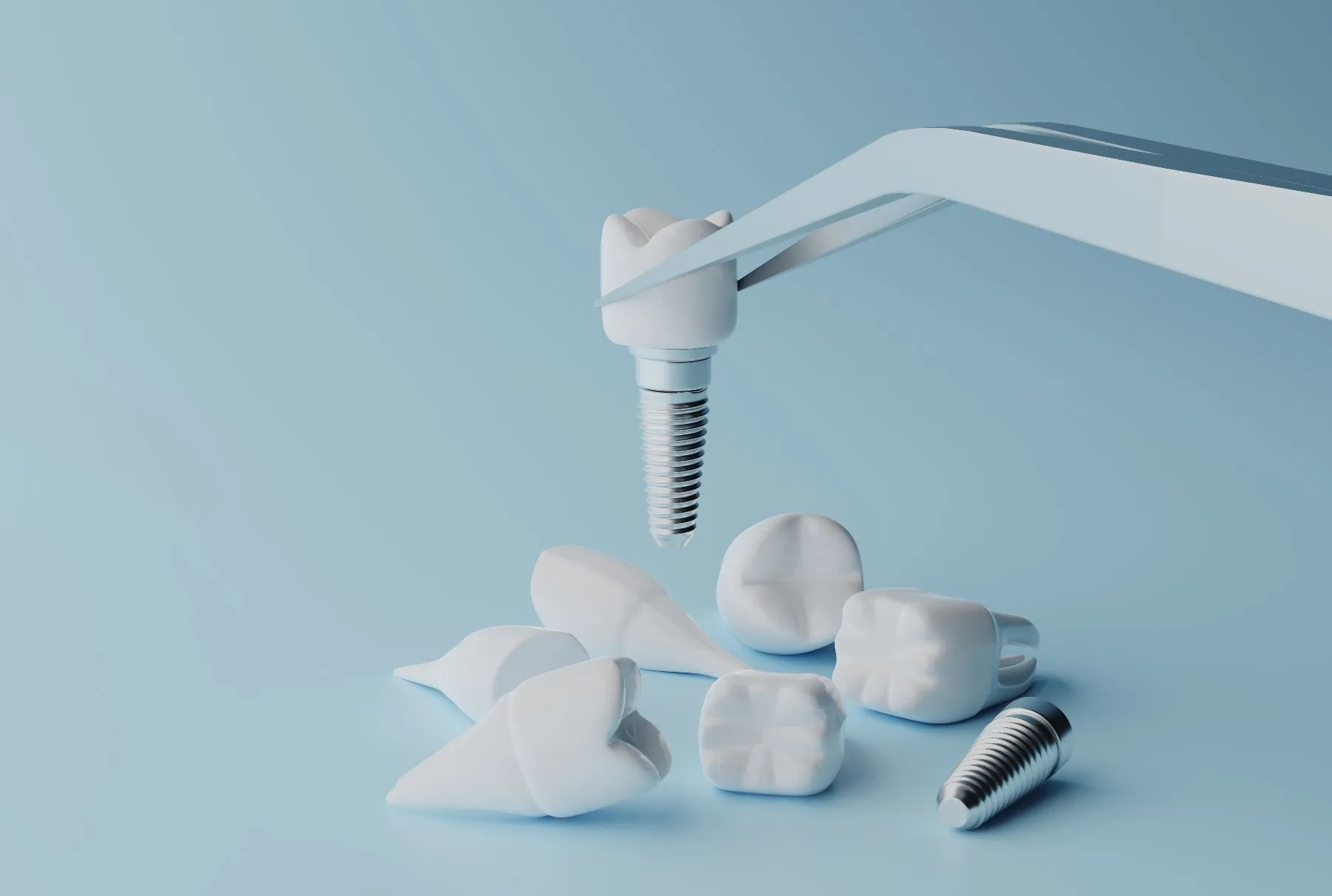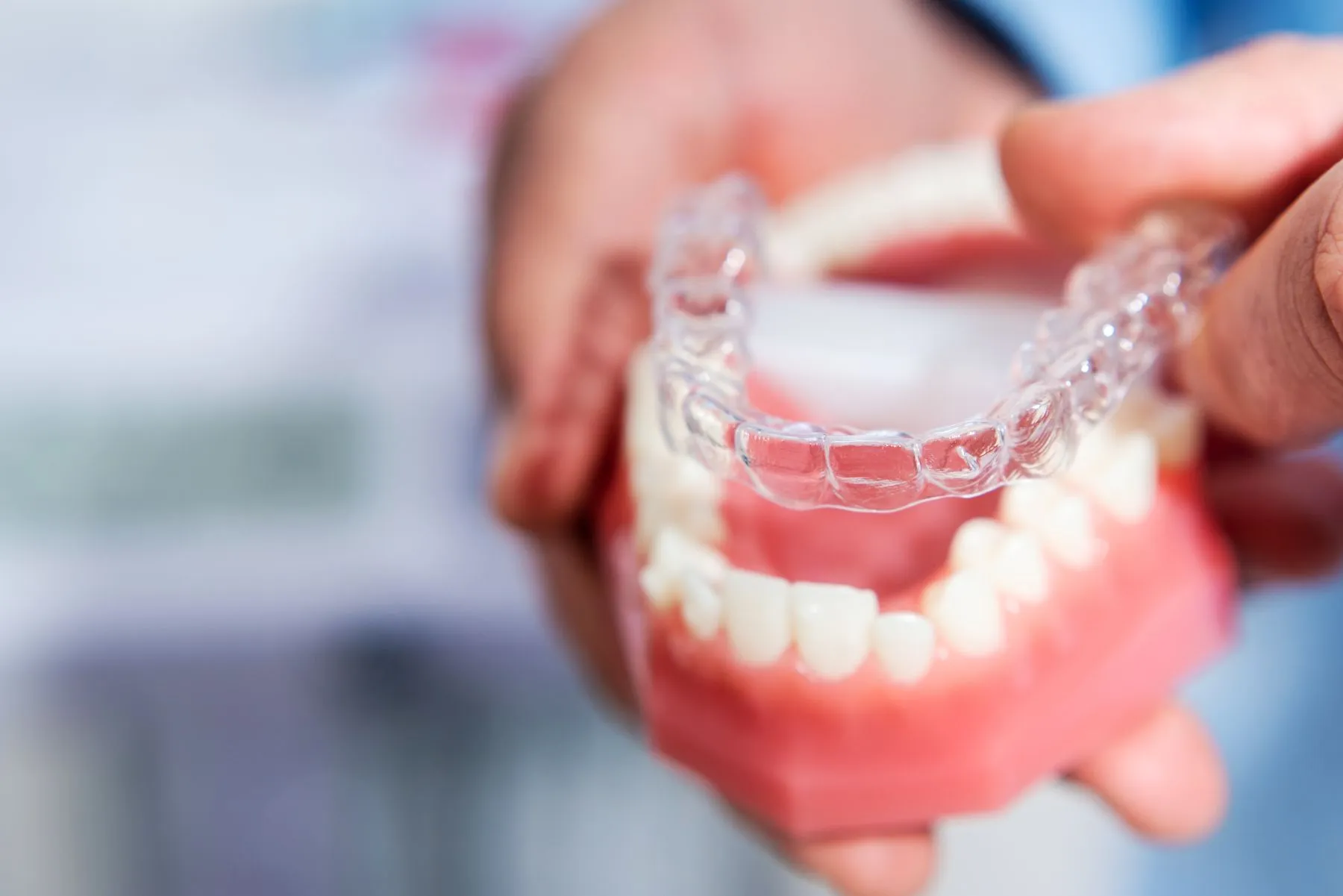Orthodontics
Orthodontics is the specialised branch of dentistry that focuses on diagnosing, preventing, and treating problems related to the alignment of teeth and jaws. It aims to correct crooked teeth, bite issues (malocclusions), and jaw irregularities using fixed or removable appliances. Orthodontics not only improves the appearance of the smile but also enhances oral health by making teeth easier to clean and reducing the risk of decay and gum disease. Treatments include braces, clear aligners, and retainers, tailored to the patient’s age, dental condition, and lifestyle. In children, orthodontics can guide jaw growth and prevent complex issues later on, while in adults, it provides discreet and effective solutions for smile improvement. With modern techniques, orthodontics is more comfortable, efficient, and aesthetic than ever, helping patients of all ages achieve healthy, well-aligned teeth and a confident smile.
Fixed Orthodontics
Fixed orthodontics refers to braces that are attached to the teeth and cannot be removed by the patient. These appliances consist of brackets bonded to each tooth, connected by wires and elastic bands that gradually move teeth into their ideal position. Fixed orthodontics is highly effective for correcting complex dental problems, including severe crowding, rotations, and bite issues such as overbites or crossbites. They are often made from metal or ceramic materials, with ceramic braces offering a more aesthetic option. Adjustments are carried out regularly by the orthodontist to ensure steady progress. One of the key benefits of fixed orthodontics is the high level of control it gives over tooth movement, leading to predictable and long-lasting results. While oral hygiene requires extra care during treatment, fixed orthodontics remains a reliable and widely used method to achieve comprehensive dental correction.
Clear Aligners
Clear aligners are removable, transparent trays custom-made to gradually move teeth into alignment. They are an increasingly popular alternative to traditional braces due to their discreet appearance, comfort, and convenience. Clear aligners work by applying gentle, controlled pressure on specific teeth, with patients switching to a new set of aligners every one to two weeks. They are ideal for treating mild to moderate alignment issues, including crowding, gaps, and minor bite problems. Since aligners can be removed for eating, brushing, and flossing, they make daily oral hygiene easier compared to fixed braces. Patients must wear them for 20–22 hours per day for best results. While clear aligners may not always be suitable for complex cases, they offer an excellent option for adults and teenagers seeking an aesthetic solution. Clear aligners combine digital planning and advanced materials to provide predictable, effective, and patient-friendly orthodontic care.
Metal Braces
Metal braces are the most traditional and widely used type of fixed orthodontic appliance. They consist of stainless steel brackets, archwires, and elastic ligatures, all working together to gradually move teeth into alignment. Known for their strength and durability, metal braces are especially effective for treating complex orthodontic cases such as severe crowding, rotations, and significant bite issues. Modern designs are smaller and more comfortable than older versions, making them less noticeable and easier to maintain. Adjustments are carried out periodically to ensure steady tooth movement. While not as discreet as ceramic braces or clear aligners, metal braces remain the gold standard for reliable and precise orthodontic results. Their affordability and effectiveness make them a popular choice, particularly for children and teenagers. With good oral hygiene and regular care, metal braces deliver predictable and long-lasting results, ensuring a healthier bite and a confident smile.
Ceramic Braces
Ceramic braces are a type of fixed orthodontic treatment that uses tooth-coloured or clear brackets instead of traditional metal ones, making them more discreet. They function in the same way as metal braces, using wires and elastic bands to guide teeth into alignment. Ceramic braces are especially popular among adults and teenagers who want effective treatment with a less noticeable appearance. While they are strong and effective, ceramic brackets are slightly more fragile than metal and can sometimes stain if not cared for properly. Adjustments are done regularly by the orthodontist to maintain progress. For patients with aesthetic concerns but complex orthodontic needs, ceramic braces offer the perfect balance between effectiveness and appearance. They allow for precise tooth movement while blending in with natural teeth, making them one of the most appealing fixed orthodontic options available today.
Lingual Braces
Lingual braces are a type of fixed orthodontic appliance placed on the inner surface of the teeth (the tongue side), making them invisible from the outside. They function like traditional braces, using brackets and wires to gradually move teeth into the correct position, but are completely hidden when smiling. Lingual braces are highly effective for patients seeking a discreet solution without removable aligners. They can treat complex cases such as crowding, spacing, and bite issues. However, because of their position, lingual braces may initially affect speech and cause tongue irritation, though most patients adapt quickly. Treatment requires specialist training and precision to achieve predictable results. For adults and professionals who prioritise aesthetics while needing comprehensive correction, lingual braces provide an excellent option that combines invisibility with the proven effectiveness of fixed orthodontic treatment.
Self-Ligating Braces
Self-ligating braces are an advanced type of fixed orthodontic appliance that uses special clips or sliding mechanisms instead of elastic bands to hold the archwire in place. This reduces friction, allowing teeth to move more freely and often shortening treatment time. Self-ligating braces are available in both metal and ceramic versions, offering patients the choice of strength or aesthetics. One of their key benefits is that they require fewer adjustments, making treatment more comfortable and reducing the number of visits to the orthodontist. They also make it easier to maintain good oral hygiene, as there are fewer components to trap plaque. Self-ligating braces are effective for treating a wide range of orthodontic problems, from mild crowding to complex malocclusions, and are considered a modern, efficient alternative to traditional braces while still delivering precise and predictable results.
Orthodontic Retainers
Orthodontic retainers are custom-made appliances designed to maintain teeth in their new position after orthodontic treatment. They are essential to prevent teeth from shifting back (relapse) after braces or clear aligners are removed. Retainers can be fixed (bonded wires placed behind the teeth) or removable (clear plastic or acrylic appliances). The choice depends on the patient’s needs and orthodontist’s recommendation. Wearing retainers as prescribed is critical, as teeth and gums need time to stabilise in their new alignment. Removable retainers should be worn consistently at first, gradually transitioning to night-time wear only. Fixed retainers provide continuous support without relying on patient compliance, though they require careful cleaning. Retainers are a vital part of orthodontic treatment, ensuring long-term success and preserving the time and investment made. Without them, teeth may drift back to their original positions.
Interceptive Orthodontics
Interceptive orthodontics refers to treatments carried out in children during their growth phase to guide jaw development and prevent severe dental problems later on. The goal is to identify issues such as crowding, crossbites, open bites, or jaw discrepancies early and treat them before they worsen. Common interceptive treatments include expanders, functional appliances, and partial braces to correct growth patterns. Starting orthodontics at an early stage can reduce the need for extractions or complex surgery in the future. It also makes treatment more efficient, as children’s jaws are still developing and easier to guide. Interceptive orthodontics is usually recommended around ages 7–10, when permanent teeth are beginning to erupt. By acting early, orthodontists can help children achieve healthier alignment, improved function, and balanced facial development, paving the way for simpler treatment later in adolescence.
Orthodontic Malocclusion
An orthodontic malocclusion is a misalignment of the teeth and jaws that affects how the upper and lower teeth fit together. Common types of malocclusion include overbite, underbite, crossbite, and open bite. Malocclusions can cause both functional and aesthetic issues, such as difficulty chewing, speech problems, increased tooth wear, or jaw pain. They may be genetic or the result of habits like thumb sucking or prolonged pacifier use in childhood. Orthodontic treatment, including braces, clear aligners, or functional appliances, can correct malocclusions by gradually moving teeth into proper alignment and guiding jaw development. Left untreated, malocclusions may worsen over time and contribute to gum disease or temporomandibular joint (TMJ) disorders. Identifying and treating an orthodontic malocclusion early helps improve oral health, facial harmony, and long-term stability, making it one of the main reasons patients seek orthodontic care.
Overbite in Orthodontics
An overbite occurs when the upper front teeth significantly overlap the lower front teeth. A small overbite is normal, but when the overlap is excessive, it can cause aesthetic and functional concerns. Severe overbites may lead to tooth wear, gum recession, jaw discomfort, or speech difficulties. In children, habits like thumb sucking can contribute to the development of an overbite. Orthodontic treatments for correcting overbites include braces, clear aligners, and functional appliances that guide jaw growth. In adults, treatment may also involve extractions or, in complex cases, jaw surgery combined with orthodontics. Correcting an overbite improves both the smile and the bite, reducing strain on teeth and jaws. With modern orthodontics, patients of any age can achieve long-lasting correction. Overbite treatment in orthodontics is a common procedure that restores balance, function, and confidence in the smile.
Underbite in Orthodontics
An underbite is a type of malocclusion where the lower front teeth extend past the upper front teeth. It is often caused by a discrepancy in jaw growth, such as an oversized lower jaw or a smaller upper jaw. Underbites can result in chewing difficulties, uneven tooth wear, and speech problems, and may affect facial aesthetics. Early intervention during childhood is ideal, using functional appliances, braces, or expanders to guide jaw growth. In adults, treatment typically involves braces or clear aligners, and in severe cases, surgical correction combined with orthodontics may be necessary. Addressing an underbite in orthodontics not only improves appearance but also ensures proper function of the bite, preventing long-term complications. With careful planning and modern techniques, orthodontists can correct underbites effectively, offering patients both functional and aesthetic benefits that enhance oral health and confidence.
Crossbite in Orthodontics
A crossbite occurs when some of the upper teeth bite inside the lower teeth instead of overlapping them correctly. Crossbites can affect a single tooth or groups of teeth, and they may occur at the front (anterior crossbite) or back (posterior crossbite) of the mouth. If left untreated, crossbites can lead to tooth wear, gum recession, jaw asymmetry, and temporomandibular joint (TMJ) problems. Treatment depends on age and severity but often includes expanders, braces, or clear aligners to realign teeth and guide jaw growth. Early treatment in children is particularly effective because the jaw is still developing, but adults can also achieve excellent results with orthodontics. Correcting a crossbite in orthodontics helps restore balance to the bite, improves oral health, and prevents long-term complications, making it a key focus in modern orthodontic care.
Open Bite in Orthodontics
An open bite is a malocclusion where the upper and lower teeth do not meet when the jaws are closed, leaving a visible gap. Open bites can be caused by habits such as thumb sucking, tongue thrusting, or prolonged use of pacifiers, as well as genetic jaw discrepancies. They often result in speech difficulties, difficulty biting food, and increased wear on the back teeth. Treatment options vary depending on the patient’s age and the cause. In children, interceptive orthodontics with appliances can help guide proper growth. In teenagers and adults, braces, aligners, or in severe cases, jaw surgery may be necessary. Correcting an open bite not only improves aesthetics but also restores function and prevents further dental complications. With tailored treatment plans, open bite correction in orthodontics provides lasting improvements in oral health and smile appearance.
Orthodontic Expansion
Orthodontic expansion is a treatment designed to widen the upper jaw (maxilla) to correct bite problems and create space for crowded teeth. It is commonly performed in children and adolescents using appliances such as palatal expanders, which apply gentle pressure to gradually widen the jawbone. Expansion is especially effective during growth phases, making early intervention key to success. Benefits of orthodontic expansion include improved bite alignment, better facial symmetry, and reduced need for tooth extractions. In adults, expansion is more limited but may still be achieved with surgical assistance combined with orthodontic appliances. Orthodontic expansion also helps correct crossbites and creates room for permanent teeth to erupt properly. It is an important interceptive technique that guides healthy jaw development, prevents complications, and ensures more efficient orthodontic treatment later in life.
Functional Appliances in Orthodontics
Functional appliances are removable or fixed orthodontic devices used to influence the growth and position of the jaws in children and adolescents. They are particularly effective for correcting skeletal discrepancies, such as overbites caused by a small lower jaw. Examples include the Twin Block, Herbst appliance, and Bionator, which reposition the jaws to improve bite relationships. Functional appliances take advantage of the natural growth phase, making them most effective before or during puberty. They may be used alone or in combination with braces for complete correction. Benefits include improved facial profile, jaw function, and alignment of teeth. While compliance is essential, functional appliances provide a non-invasive way to treat problems that might otherwise require surgery in adulthood. Functional orthodontic appliances play a crucial role in early treatment, guiding jaws and teeth into healthier, more harmonious positions.
Clear Braces
Clear braces are a type of fixed orthodontic appliance designed to be more discreet than traditional metal braces. They use tooth-coloured ceramic or transparent brackets combined with clear or white wires and elastics, making them less visible. Clear braces are particularly popular with adults and teenagers who want effective orthodontic correction without the metallic look of traditional braces. They work in the same way as metal braces, gradually moving teeth into alignment, but require slightly more care since ceramic brackets can stain or break more easily. Clear braces are highly effective for treating a wide range of orthodontic issues, including crowding, gaps, and bite problems. Patients benefit from a more aesthetic treatment option without compromising on precision and results. With good oral hygiene and regular check-ups, clear braces offer a balance between effectiveness and cosmetic appeal.
Orthodontic Elastics
Orthodontic elastics, also known as rubber bands, are small elastic bands used in conjunction with braces to correct bite discrepancies such as overbites, underbites, or crossbites. They provide additional force to move teeth and jaws into proper alignment, working alongside brackets and wires. Elastics can be worn in different configurations depending on the treatment goals, and they must be changed daily to maintain their effectiveness. While they may feel tight at first, patients quickly adapt. Consistent wear is crucial, as skipping elastics can slow progress and extend treatment time. Orthodontic elastics are an important part of comprehensive orthodontic care, ensuring that the bite is corrected as well as the alignment of teeth. With proper use, orthodontic elastics help achieve functional, stable, and long-lasting results that improve both oral health and smile aesthetics.
Orthodontic Archwire
An orthodontic archwire is the metal wire threaded through brackets in braces that applies pressure to teeth, guiding them into proper alignment. Archwires come in different materials, including stainless steel, nickel-titanium, and beta-titanium, each chosen based on the treatment stage. Nickel-titanium wires are highly flexible and often used at the start of treatment to gently move teeth. As treatment progresses, stiffer wires provide more precise control. Archwires are periodically adjusted or replaced to maintain movement and ensure progress. They can also be shaped to suit the individual needs of each patient. In self-ligating braces, the archwire is held by clips instead of elastics, reducing friction. The orthodontic archwire is a critical component of fixed braces, translating the orthodontist’s plan into controlled forces that gradually achieve a healthy, aligned smile.
Orthodontic Bands
Orthodontic bands are small metal rings that are cemented around the back molars to provide a stable anchor for braces. They often include brackets, tubes, or hooks that connect to archwires, elastics, or other orthodontic appliances. Bands are highly durable and especially useful for patients who require significant tooth movement or additional orthodontic attachments. Placement involves fitting the band to the tooth, then cementing it securely. While not all patients need bands, they are commonly used in complex cases. Orthodontic bands help distribute forces evenly across the teeth and ensure that treatment remains stable and effective. With proper oral hygiene, bands function comfortably throughout treatment, playing an important role in achieving predictable orthodontic results.
Orthodontic Separator
An orthodontic separator, sometimes called a spacer, is a small elastic ring placed between teeth to create temporary space before orthodontic bands are fitted. They are typically placed between molars a few days before braces are applied. Patients may feel slight pressure or discomfort as the separator gently pushes teeth apart, but this subsides quickly. Separators are removed once enough space has been created to place the bands. While they are small and temporary, orthodontic separators are an essential step in preparing for braces, ensuring that bands fit properly and securely. Patients are advised to avoid sticky foods and flossing in the areas with separators to prevent them from dislodging. This simple yet effective device ensures that braces are applied smoothly and comfortably, helping set the foundation for successful orthodontic treatment.
Interproximal Reduction (IPR) in Orthodontics
Interproximal reduction (IPR) is a technique in orthodontics where a small amount of enamel is carefully removed from between teeth to create space for alignment. It is often used in cases of mild crowding or when teeth are slightly oversized. The procedure involves using fine strips, discs, or burs to smooth and reshape the enamel, typically removing less than half a millimetre. IPR is safe, painless, and does not damage teeth, as only a very small amount of enamel is reduced. Once space is created, braces or clear aligners can move teeth into better positions without extractions. Interproximal reduction in orthodontics is a conservative alternative to tooth removal, helping to achieve proper alignment while maintaining natural teeth. It is commonly used in modern aligner treatments to optimise results and create a balanced, natural-looking smile.
Orthodontic Retreatment
Orthodontic retreatment refers to undergoing orthodontic care a second time, often because teeth have shifted after initial treatment. This usually occurs when retainers were not worn as prescribed, or due to natural changes in teeth and jaws over time. Retreatment may involve braces, clear aligners, or limited orthodontic adjustments depending on the severity of the relapse. Many adults seek orthodontic retreatment to restore the results of earlier treatment and improve both function and aesthetics. Advances in orthodontics mean retreatment is often faster and more discreet than before, thanks to options like aligners or ceramic braces. Orthodontic retreatment provides patients with another opportunity to achieve and maintain a healthy, aligned smile, emphasising the importance of long-term retention and follow-up care after orthodontics.
Orthodontic Consultation
An orthodontic consultation is the first step in evaluating a patient’s teeth, jaws, and bite to determine whether treatment is needed. During the visit, the orthodontist carries out a clinical examination, photographs, X-rays, and digital scans to assess alignment and jaw relationships. This comprehensive evaluation helps identify issues such as crowding, spacing, overbite, underbite, or crossbite. The orthodontist then discusses treatment options, such as braces, clear aligners, or interceptive appliances, along with estimated treatment time and costs. An orthodontic consultation is essential for creating a personalised treatment plan tailored to the patient’s age, dental health, and lifestyle. It also provides an opportunity for patients to ask questions and understand their options. Whether for children, teenagers, or adults, the consultation ensures that orthodontic treatment begins with clear goals and realistic expectations, forming the foundation for successful results.
Orthodontic Appliances
Orthodontic appliances are devices used to move teeth, guide jaw growth, or maintain treatment results. They can be fixed (like braces, expanders, or space maintainers) or removable (like clear aligners, retainers, or functional appliances). Each appliance is custom-made to suit the patient’s treatment needs. Fixed appliances provide continuous correction, while removable appliances offer flexibility but require patient compliance. Orthodontic appliances may also be used in early interceptive treatment to prevent more severe problems later on. Advances in technology have made appliances more comfortable, discreet, and efficient. Orthodontic appliances are the core tools of orthodontic care, helping to align teeth, improve function, and create a balanced smile. They work gradually but predictably, guided by the orthodontist’s adjustments and the patient’s cooperation, to deliver long-lasting results.
Orthodontic Emergencies
Orthodontic emergencies are unexpected problems that may occur during orthodontic treatment, such as broken brackets, loose wires, lost elastics, or discomfort from appliances. While most situations are not true emergencies, they can cause irritation or slow treatment progress if not addressed promptly. Patients may be able to manage minor issues at home by covering sharp wires with orthodontic wax or trimming protruding ends. However, persistent pain or significant damage requires a visit to the orthodontist. Common orthodontic emergencies include broken retainers, displaced separators, or injuries that damage braces. Knowing how to handle these situations helps patients feel confident during treatment. At Dental Excellence, we provide guidance and support for urgent concerns to ensure comfort and keep treatment on track. With prompt care, orthodontic emergencies rarely interfere with the overall success of treatment.
Retention in Orthodontics
Retention in orthodontics is the stage after active treatment where retainers are used to hold teeth in their new positions. After braces or aligners are removed, teeth and gums need time to stabilise. Without retention, teeth naturally tend to drift back toward their original positions, a process called relapse. Retainers can be fixed (bonded wires) or removable (clear plastic or acrylic appliances). Compliance is essential, as wearing retainers as instructed ensures long-term results. The retention phase may last several years or even be lifelong in some cases. Retention in orthodontics is as important as active treatment, safeguarding the time and investment patients have made. By following retention protocols, patients enjoy a stable, healthy, and confident smile for many years after orthodontic treatment.
Orthodontic Technology
Orthodontic technology has advanced significantly, making treatment more efficient, comfortable, and aesthetic. Modern innovations include 3D digital scans, computer-aided treatment planning, self-ligating braces, clear aligners, and digital smile simulations. These tools allow orthodontists to diagnose with precision and create highly personalised treatment plans. Technology also improves patient experience by reducing treatment times, increasing comfort, and providing more discreet options such as ceramic braces and aligners. Orthodontic technology extends to monitoring tools, where patients can share progress with their orthodontist remotely using apps and photos. These advances ensure greater convenience and predictability, offering patients better results with less disruption to their daily lives. The integration of technology into orthodontics continues to transform care, helping both children and adults achieve their ideal smile with modern, evidence-based methods.
Orthodontic Treatment for Adults
Orthodontic treatment for adults has become increasingly common, with more patients seeking correction later in life for functional or aesthetic reasons. Advances such as clear aligners, ceramic braces, and lingual braces make treatment more discreet and convenient, addressing one of the main concerns for adult patients. Orthodontics in adulthood can improve not only smile appearance but also oral health by reducing crowding, improving bite function, and lowering the risk of gum disease. While adult treatment may take longer than in children due to fully developed bone, modern techniques make it predictable and effective. Some cases may require combined approaches with restorative dentistry or periodontal care. Orthodontic treatment for adults proves that it is never too late to achieve a healthier, more confident smile, making it a valuable option for patients at any stage of life.
At Dental Excellence, we combine technology, experience, and personalised attention to help you achieve the results you deserve — without compromise.
📍 Dental Excellence
THE OLD BANK HOUSE, HIGH STREET CHALFONT ST GILES, HP8 4QZ
📞 01494 876 128
📱 WhatsApp: 07956 743372
📧 contact@dentalexcellence.co.uk
→ Book your consultation today and discover what truly excellent dentistry feels like.



